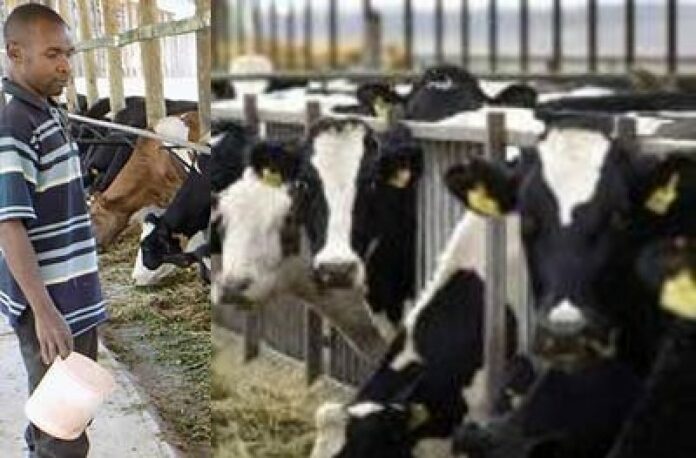Expensive feeds is one of the major challenges faced by dairy farmers in Kenya, with some now looking for alternative feeds to cut production cost while ensuring their animals produce optimally.
In Nyandarua County, one farmer, Anthony Kiarie Muigai, has turned to climate-resilient forages to cushion himself from the high production cost as a result of the rising cost of animal feeds.
This is after he conducted a research to find alternative ways to lower production costs.
“For a farmer who wants to remain afloat in the milk business, there must be alternative ways to cut down production expenses,” he explains.
Kiarie has embraced high-protein and energy-rich forages, which he says have significantly reduced production expenses.
“Even with the challenges facing the livestock sector, through the use of climate-adapted forages, especially those rich in protein and energy, I have been able to significantly reduce production expenses,” he told Seeds of Gold.
On his four-acre farm, supplemented by an additional 10 acres under lease, Kiarie grows Lucerne, maize, super napier grass, vetch fodder, and sweet potato vines.
Edwin Githae: What we found out after investing in grape farming in Kitui
He cultivates maize for silage on 10 acres, while the super Napier Pakchong grass occupies a two-acre piece of land.
The farmer grows the hybrid PAN 691 maize variety, known for its ability to withstand harsh climate. The variety can be grown for various purposes including as a forage or grain and matures in between 90 to 100 days under ideal conditions and with proper management.
“Lucerne occupies half an acre, while sweet potato vines and vetch fodder are alternated with other crops,” he adds.
Now five years after adopting the nutrient-rich climate-adaptable forages, Kiarie says he has reduced feed costs by about 60 percent.
“Initially, I was using a lot of dairy meal—about 10 to 12 kilogrammes per cow per day. However, with the fodder I grow, the expenses have significantly dropped,” he notes.
He has invested in feed formulation machinery, including a tractor-operated chopper, chaff cutter, and tractor, equipment as well as an irrigation system to ensure a constant water supply.
The farmer currently has 12 dairy cows with eight of them producing milk. On average, each of his cows produces 25 litres of milk per day, with the lowest-producing cow yielding 14 litres and the highest 32 litres.
He attributes this growth to his bold decision to explore alternative feed sources.
“A litre is bought at Sh48 by Brookside Dairy, and I supply the processor with between 200 and 300 litres of milk daily,” he says while encouraging other farmers to adopt alternative feeds to cut production cost.








